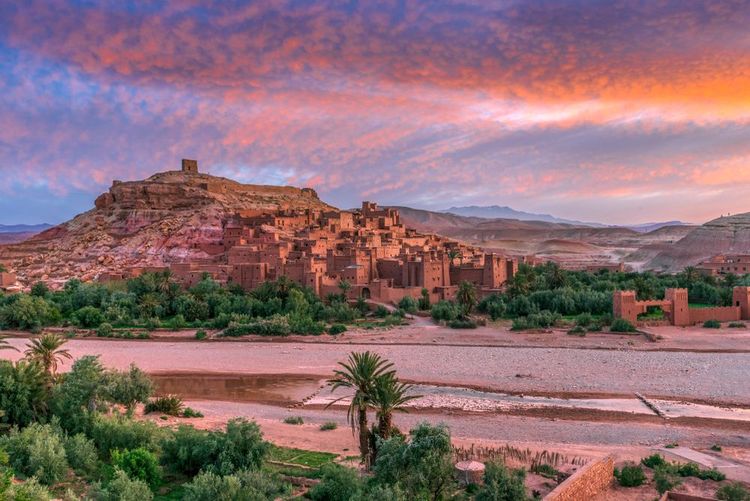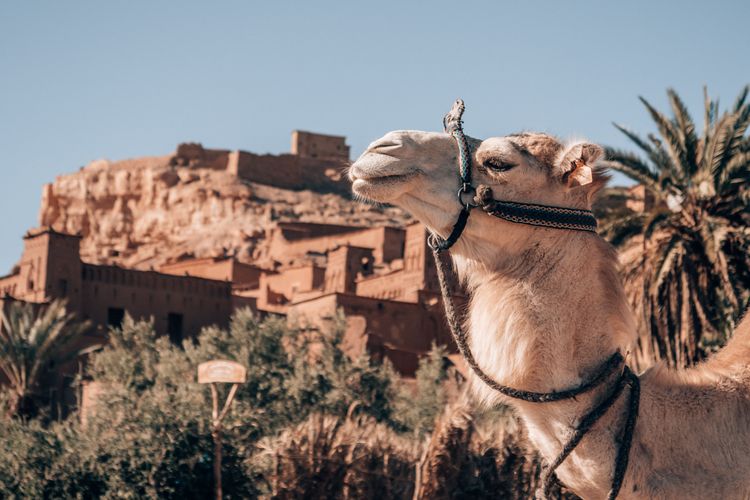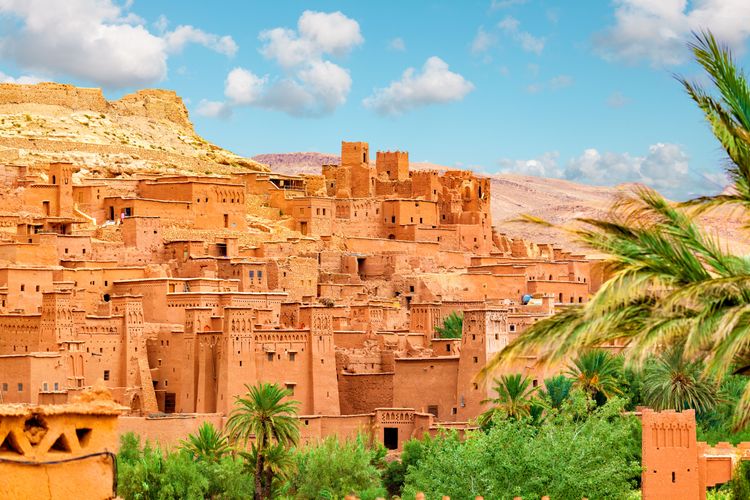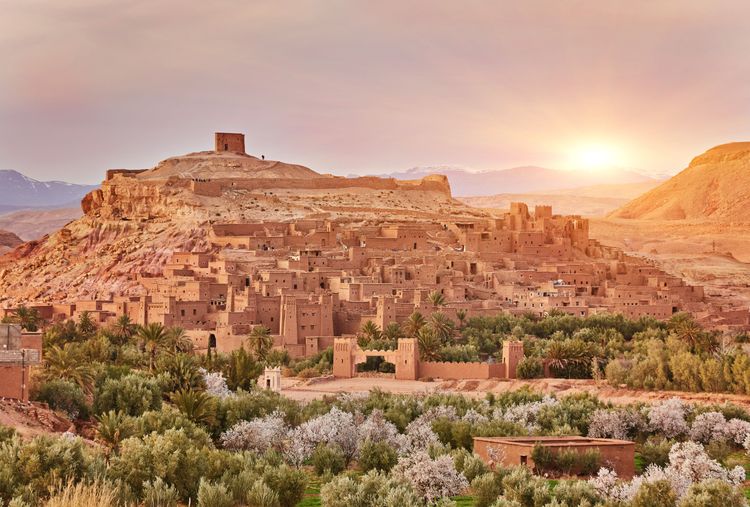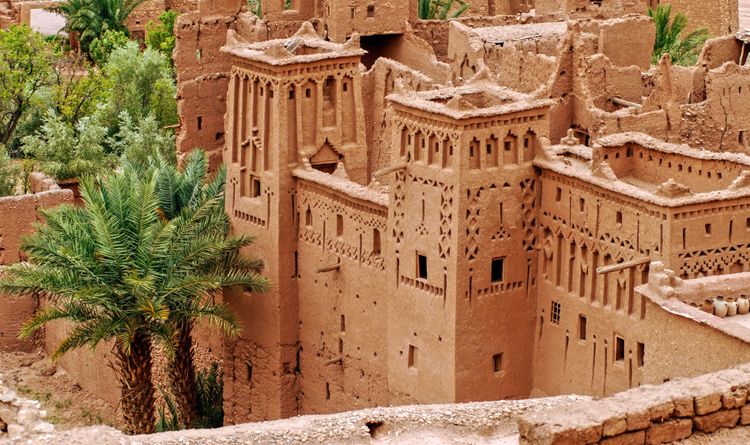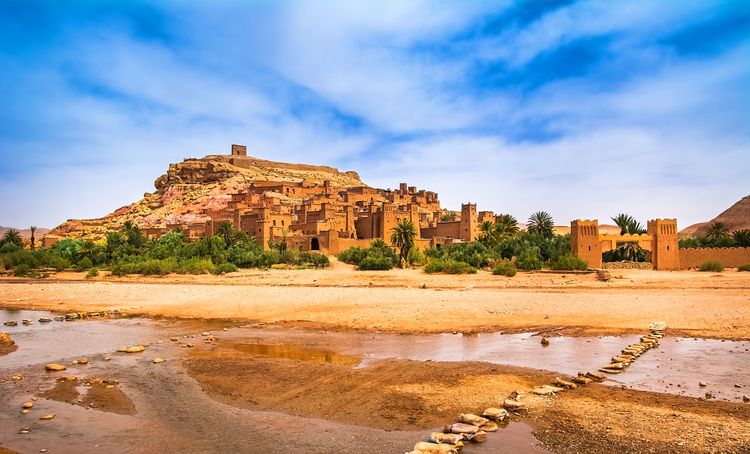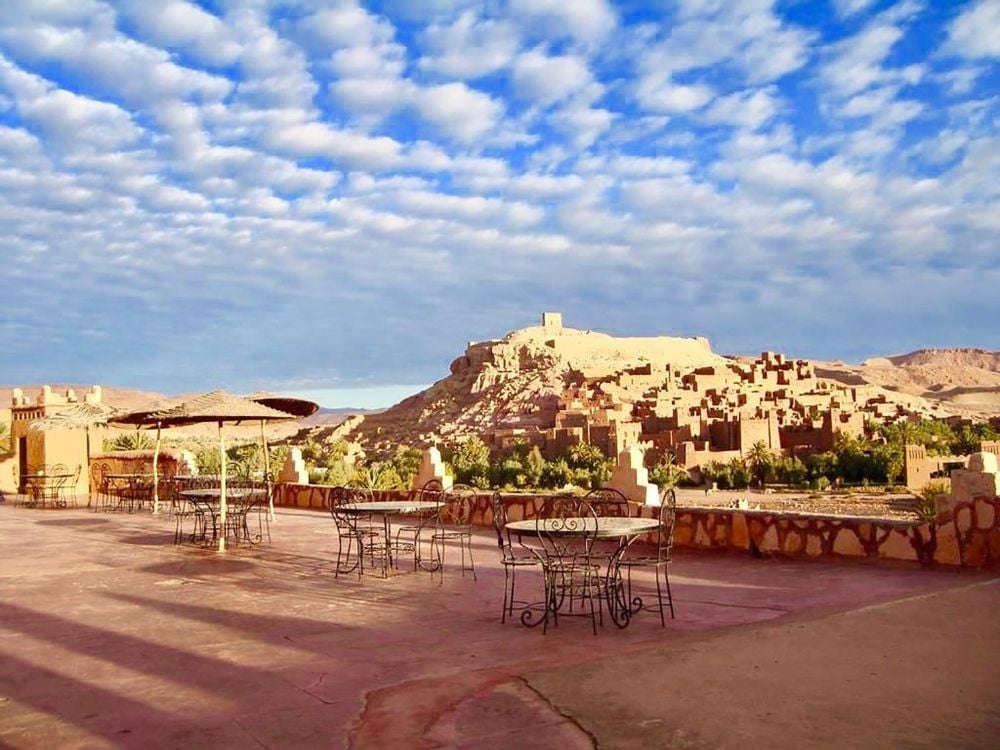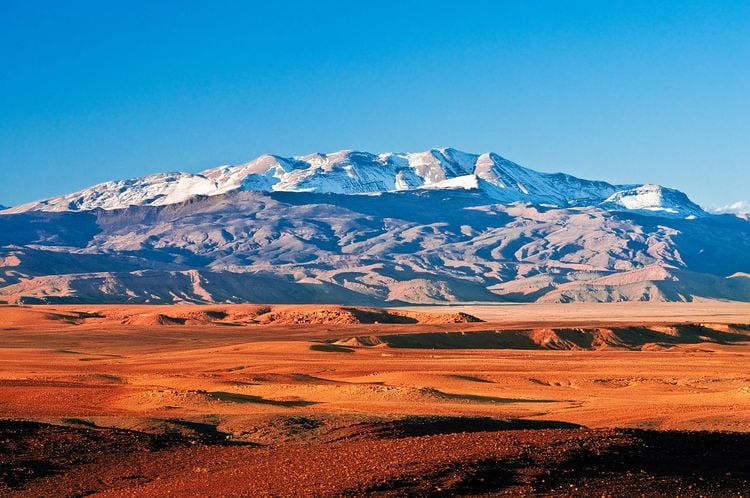Aït Ben Haddou is a ksar built in the verdant Ounila valley. At one time, this valley was one of the crossing points for caravans between Marrakech and the southern Sahara. A ksar is a fortified village of Berber architecture, surrounded by a wall with dwellings inside. Not to be confused with a kasbah (numerous in Morocco), which is a square building with a tower at each corner.
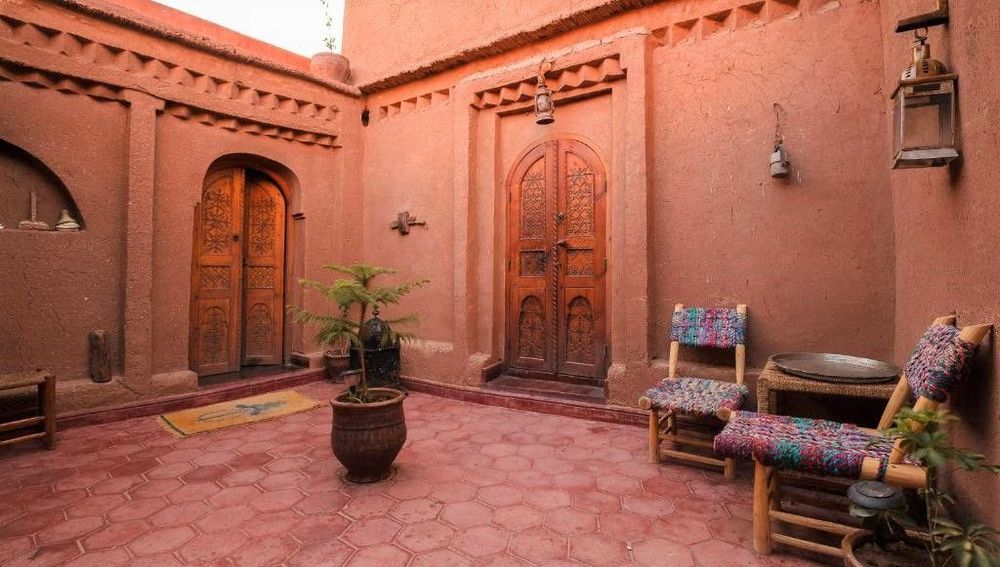 Atlas
Atlas
